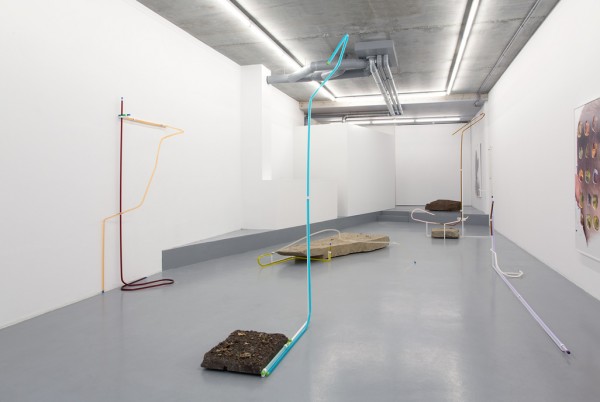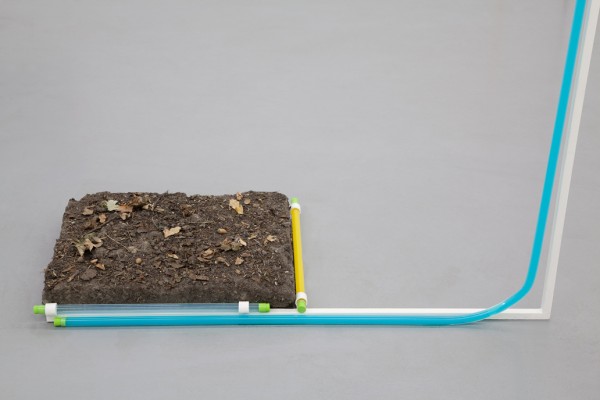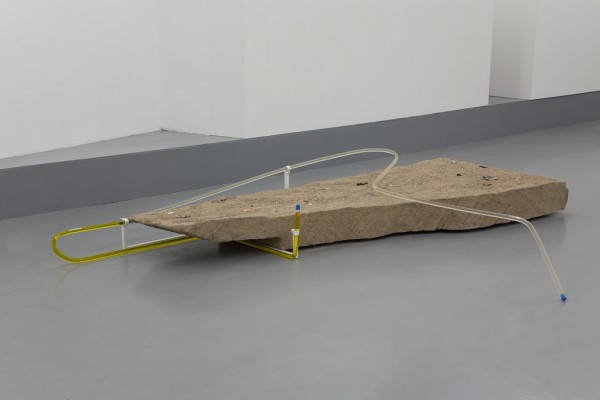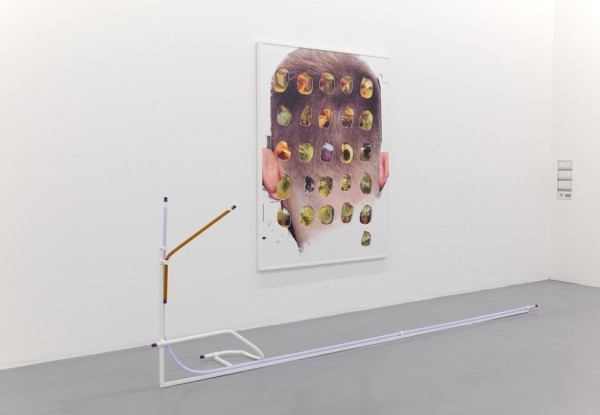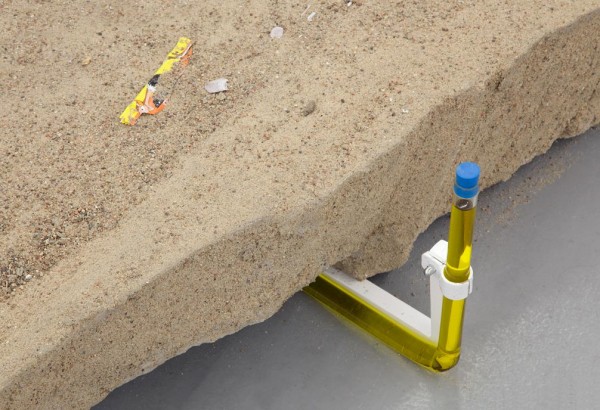Anne de Vries
Wednesday, 24 September 2014
Work from The Oil we Eat
“The sculptures in the exhibition can be considered as sculptural interpretations of situations. Reconstructing a minimized version of an event as it is taking place in common locations such as a hotel in London, a bar in Venice, a car wash in Germany, a beach in France, a fitness centre in Amsterdam. In the exhibition we also encounter different pieces of land; a piece of beach, some forest soil, a bit of village road, all seem to be cut out of their previous environments and ecosystems and brought together in the exhibition space.
Around the soil we are confronted with a diverse range of fluids in bent pipes, flowing freely through the space, forming three-dimensional compositions. The pipes are filled with several quotidian ingredients such as: beverages, food, body care, medicine, house cleaning products and fuel. ‘The Oil We Eat’ is about getting to know a situation through the commodities that are attracted to the event and the demand for pleasure and well-being by humans in any given location.
The title ‘The Oil We Eat’* refers to the use of fossil energy, once that the primary productivity energy – i.e. the total amount of plant mass created by the Earth in a given year – has been processed. Fuel is burned, energy is released and necessary for even the tiniest insignificant thoughts. This brings us to the digital prints on the wall, ‘Interface’ is a project inspired by the failure to depict a flow of unfocused thoughts and perception, including the subconscious associations and glitches as they emerge and disappear.
By combining these two bodies of work, the exhibition becomes about with the interrelations between a material and chemical process and the subjective experience as a by-product. The religious Gottfried Wilhelm von Leibniz (1646-1716), tried to challenge the philosophical concept of materialism at the time, by sketching a scenario in which we would enlarge our brain and imagine ourselves walking through it and looking around, we would only be able to see processes, electrochemical material events, and he questioned where and how we would be able to find the actual thoughts, hopes, fears, desires or pains.** What does it take for a chemical process in a body to be translated into an emotion or a thought, what are the minimum requirements for an entity to be able to experience these side-effects. And how sculpture and art has the ability to shape a specific chemical reaction that is turned into an experience starting with material and form.”
